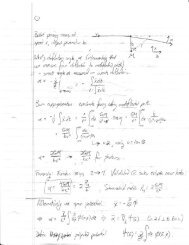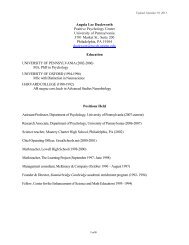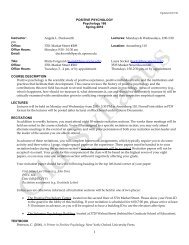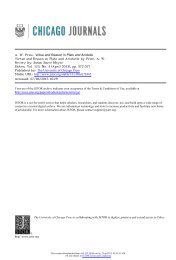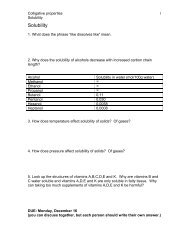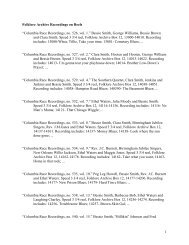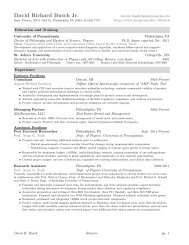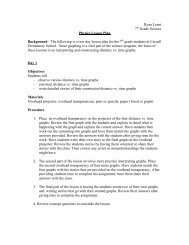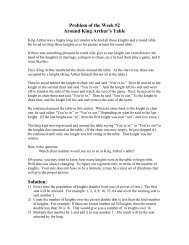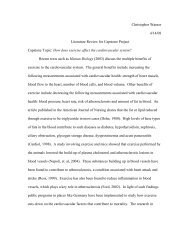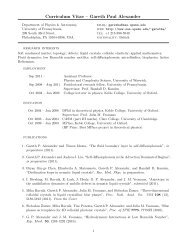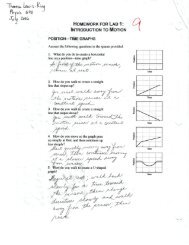Dusty Carroll Lesson Plan 4: Getting to know Lactase Background ...
Dusty Carroll Lesson Plan 4: Getting to know Lactase Background ...
Dusty Carroll Lesson Plan 4: Getting to know Lactase Background ...
Create successful ePaper yourself
Turn your PDF publications into a flip-book with our unique Google optimized e-Paper software.
Putting It All Together<br />
Work <strong>to</strong>gether in your chem/bio groups <strong>to</strong> answer the following questions. Make sure that EACH of you<br />
<strong>know</strong>s how <strong>to</strong> answer the questions and is able <strong>to</strong> understand what you write down. This may NOT be the<br />
last time you see these questions!!!<br />
1. You have learned how the study of enzymes can depend on some chemistry principles. Using this<br />
simpler example, answer the following questions.<br />
From the 1999 AP Chemistry Test<br />
2 NO(g) + Br2(g) � 2 NOBr(g)<br />
A rate study of the reaction represented above was conducted at 25ºC. The data that were obtained<br />
are shown in the table below.<br />
Experimen<br />
t<br />
Initial<br />
[NO]<br />
(mol L –1 )<br />
Initial<br />
[Br2]<br />
(mol L -1 )<br />
Initial Rate of<br />
Appearance of<br />
NOBr (mol L –1 s –<br />
1 )<br />
1 0.0160 0.0120 3.24x10 –4<br />
2 0.0160 0.0240 6.38x10 –4<br />
3 0.0320 0.0060 6.42x10 –4<br />
(a) Calculate the initial rate of disappearance of Br2(g) in experiment 1.<br />
(b) Determine the order of the reaction with respect <strong>to</strong> each reactant, Br2(g)and NO(g). In each case, explain<br />
your reasoning.<br />
(c) For the reaction,<br />
(i) write the rate law that is consistent with the data, and<br />
(ii) calculate the value of the specific rate constant, k, and specify units.<br />
(d) The following mechanism was proposed for the reaction:<br />
Br2(g) + NO(g) � NOBr2(g) slow<br />
NOBr2(g) + NO(g) � 2 NOBr(g) fast<br />
Is this mechanism consistent with the given experimental observations? Justify your answer.<br />
Answer<br />
Note: Some of the equations show the infinity sign instead of the multiplication sign. My<br />
apologies…I’ll have <strong>to</strong> reload my equation edi<strong>to</strong>r.<br />
(a) Since the disappearance of 1 Br2 produces 2 NOBr, then the rate would be half as much or rate<br />
= -1.62x10 –4 .<br />
(b) With respect <strong>to</strong> Br2: rate = k [NO] m [Br2] n<br />
In expt. 2 the [Br2] is twice the concentration in expt. 1, as well, the initial rate of expt. 2 is<br />
twice the initial rate of expt. 1, while [NO] remains constant. Therefore, it is 1st order with<br />
respect <strong>to</strong> [Br2], n = 1.<br />
With respect <strong>to</strong> NO: rate = k[NO]<br />
m[Br2] 1<br />
expt. 2: 6.38x10 –4 = k (0.0160) m (0.024)



